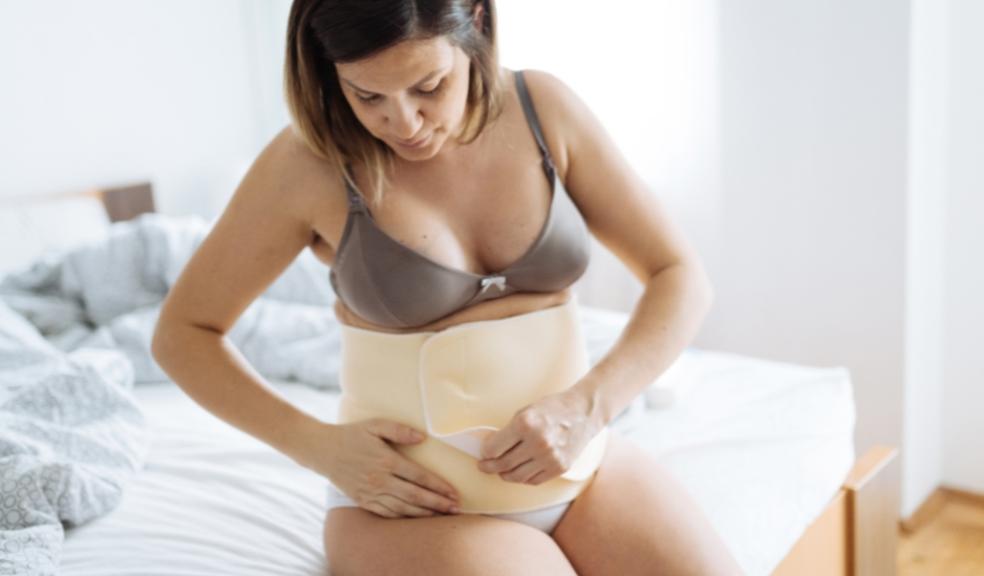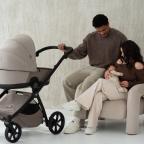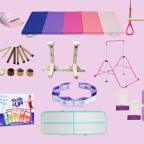
7 Surprising Benefits of Using a Postpartum Belt
The mother's body has undergone many changes during pregnancy and will need time to fully recover after giving birth. One of the indispensable "companions" for a more effective postpartum recovery is the postpartum belt.
When it comes to belly belts, many people often think that they simply help mothers "get back in shape quickly" or reduce belly fat. However, postpartum belts have more benefits than you think! Let's explore 7 great benefits of postpartum belly belts to know why you should own one for better postpartum recovery!
7 Benefits of Wearing a Postpartum Belt
After welcoming a little angel, mothers will face many major changes in their bodies, including stretched abdominal muscles, sore backs, and psychological pressures related to body shape. The postpartum belt not only provides physical support but also mental support, helping mothers recover more comprehensively. Below are 7 outstanding and surprising benefits that this small belt can bring.
1. Supports Abdominal Muscles
The greatest benefit of a postpartum belly band is that it provides gentle compression to support the abdominal muscles. During pregnancy, the mother's abdominal muscles stretch to make room for the baby inside. Therefore, mothers after giving birth often experience abdominal muscles that are stretched, weakened, and become loose. A postpartum belly wrap will help tighten the abdomen and support the muscles to gradually return to their original position.
Some mothers may also experience a condition called abdominal muscle separation, or diastasis recti. This is a condition where the rectus abdominis muscles are separated and cannot return to their original position. A postpartum belly band will help tighten core after pregnancy, improve diastasis recti, and create favorable conditions for mothers to start recovery exercises.
2. Aids C-Section Recovery
For mothers who have had a cesarean section, the lower abdomen and incision are often very sensitive, so the support of a postpartum belt is necessary. The C-section recovery belt will help reduce pressure on the incision, limiting the feeling of pain when the mother moves, coughs, or laughs.
The postpartum belly belt also helps reduce C-section overhang (sagging abdomen after surgery) by supporting muscles and skin to contract more effectively. The belly wrap also helps mothers who have had a cesarean section move more easily, reduces bleeding, and helps the cesarean section wound heal faster.
3. Accelerates Uterus Shrinkage and Supports the Pelvic Floor
The next benefit of a postpartum belt is to speed up the process of uterine contraction and support the pelvic floor muscles. After giving birth, the uterus needs time to contract back to its original size. This process usually takes about 6 weeks, depending on the mother's ability to recover. The belly belt will provide gentle compression to stimulate the uterus to contract faster, limiting the condition of the uterus being displaced or sagging.
In addition, the postpartum belt also provides support for the mother's pelvic floor muscles during the recovery process. Your pelvic floor muscles are often stretched during pregnancy due to hormones, which can cause urinary incontinence. Therefore, the belly belt will help support the pelvic floor muscles better, providing a "firm" feeling to the lower abdomen, helping the mother move more safely in the early stages.
4. Reduces Lower Back Pain
Back pain, especially lower back pain, is a very common condition for mothers after giving birth. You will often have to deal with back pain due to hormonal changes, weight gain, and stress during the process of taking care of your baby. Some mothers also experience severe back pain after a C-section due to the effects of spinal anesthesia or anesthesia.
A belly belt will help you "deal" with these uncomfortable, sharp pains. It will fix the lower back, support the spine, and reduce pressure on the back when the mother bends down or holds the baby. The belly belt also creates a feeling of firmness, helping the mother feel more comfortable when standing for a long time or moving.
5. Improves Posture and Spinal Alignment
After giving birth, mothers often tend to hunch over when breastfeeding or holding their babies, which can gradually cause spinal misalignment and neck and shoulder pain. A properly designed belly band can gently "remind" mothers to maintain an upright posture when sitting or standing. The band also helps redistribute body weight, reducing pressure on the back and supporting the spine to maintain a natural posture.
6. Encourages Gentle Mobility
Even when just walking around the house, a feeling of “looseness” in the lower abdomen can make mothers reluctant to move. Wearing a postpartum belt will create a sense of stability, helping mothers feel more confident when walking, standing up, or bending down. The belt also helps encourage light exercise to increase blood circulation and promote more effective recovery. You can use a postpartum belt to fix and support your body when starting light postpartum exercises (of course, with your doctor's permission).
7. Boosts Confidence and Body Image
The final benefit that many mothers may not think of is postpartum psychological support. Not only is it a physical issue, but postpartum psychology also greatly affects the mother's mental health. Many postpartum mothers feel self-conscious about their figure, especially when they have not "returned to shape" as desired.
Although the belt is not a miracle that helps you lose weight immediately, it will fix the uncertain abdomen, prevent the abdomen from sagging too much, and make clothes fit tighter. The belt will give mothers a sense of confidence when going out or meeting friends. And this is the first step for mothers to have a comfortable mentality, starting the journey of "recovering and upgrading themselves" after giving birth.
How to Choose a Postpartum Belt?
With the above great benefits, postpartum belly wraps are the best friend for every mother's recovery journey. But not all postpartum belly belts are the same, and choosing the right product will greatly affect the effectiveness as well as comfort during use.
- Types of postpartum belts
There are many types of belly bands on the market, each suitable for different needs. First, the elastic wrap is the best postpartum belly wrap today. It is usually made of soft, elastic fabric to help hug the abdomen and provide gentle compression.
You can also refer to the 3-in-1 belt if you want more comprehensive support. This type of belt includes a belly band, lower back belt, and hip belt, especially useful for mothers who have had a cesarean section or have diastasis recti. In addition, there is also a type of postpartum belly band on the market called shapewear. They have a more fixed structure, higher tightness, so they can be uncomfortable if worn for too long.
- Comfort
To choose the right postpartum belt, you also need to consider comfort. Choose belts made from breathable, soft materials such as cotton or spandex to avoid causing stuffiness or itching. You should choose a belt that is elastic and can adjust the fit to suit your changing postpartum body.
- Ease of use
As a new mom, you don't want to spend too much time wearing a cumbersome belt. And if the belly belt is too difficult to wear, you will most likely "throw it away". So, choose a postpartum belt with a simple design, easy to remove and adjust. Don't forget to consider the ability to wear it alone, without support, for more flexibility.
- Discreetness
Finally, if you plan to wear a postpartum belt under everyday clothes or to the office, modesty is essential. You should choose a slim, close-fitting design that won't show your ribs under your shirt. It's best to choose a neutral color like nude or black for easy matching.
Wrap Up
Though small and compact, a postpartum belt can offer significant benefits. The abdominal belt will support both physically and mentally, helping pregnant mothers recover better. However, each body is different. Therefore, mothers should listen to their bodies and consult a doctor before using to ensure safety and best effectiveness. Don't be too hasty because the postpartum recovery journey takes time and patience. Wishing you a smooth and proper recovery journey!














